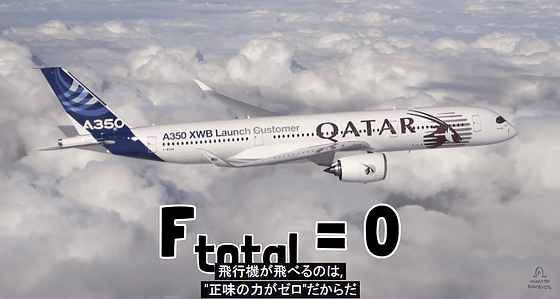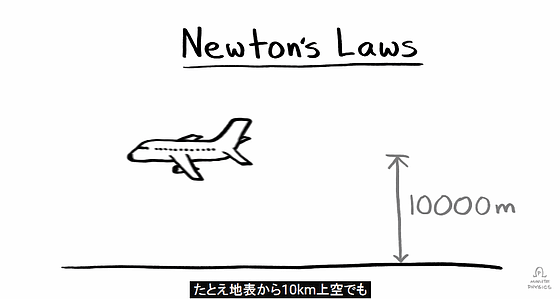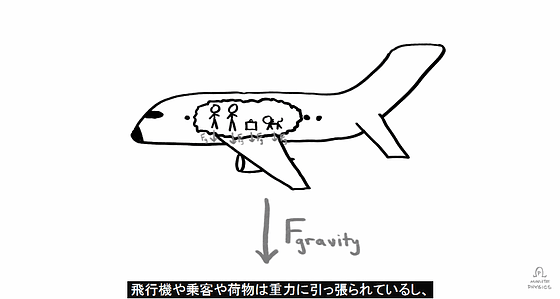A movie that explains why airplanes can fly easily "How Do Air Planes Fly?"

When going abroad, I fly in the sky by airplane, but the Boeing 747, a general large-scale aircraft riding casually, fly with a weight of up to 394.6 tons on a giant of 70.7 meters in length can do. Regarding the mechanism by which such huge objects fly in the sky, frequent explanation on the principle of airplane "Bernoulli's theoremThe movie explained in an easy-to-understand manner by illustration is not used, but it is released.
How Do Airplanes Fly? - YouTube
The reason that an airplane can float in the air is because "the plural forces applied by the airplane are balanced (net force is zero)".

If the net force is zero, the stationary object will remain stationary and the moving object will continue to move.

This law does not change even at 10 km Earth's surface.

Airplanes flying in the sky are passengers / aircraft including luggage are pulled down by gravity ... ...

Molecular forces in the air that strike the aircraft during flight and the power of molecules injected from the engine are acting.

If the power of such air molecules to raise the aircraft is balanced with the gravitational pull of the aircraft, the airplane will be floating in the air.

Here, the question "How does an aircraft control the force of an invisible molecule?" Comes up, but the airplane is designed in such a way that many molecules strike the lower part of the wing during flight It is.

Since the number of molecules colliding with the airplane wings on the ground is the same at both the upper and lower parts, the airplane will not rise arbitrarily.

However, when the aircraft is moving, the wings designed in the shape of a curve slightly tilt ... ...

A lot of molecules collide at the lower part than the upper part of the wing, and the momentum at the time of the collision becomes strong, so "the pressure to push up the wing" increases.

Depending on the slope of the wing, the number of molecules striking the upper part will be smaller, and the momentum at the time of a collision will be smaller.

This is because the upper part of the wing is protected by the forward thrust, as if running in the rain it is the same as the back being hard to get wet even if it gets wet.

Furthermore, since the wind hitting the wing of the airplane draws a curve, the molecule is ejected out from the center of the curve. Therefore, the pressure of the molecule striking the upper part is small.

In other words, since the wing of the airplane in flight is shaped to receive a large amount of pressure from the bottom, the pressure from the bottom becomes larger than the gravity, so that the sky can fly. The "floating force" exceeds "falling power", so the airplane floats in the air.

The collision force of the molecule also acts as a pressure to decelerate the airplane, but because the engine pushes the molecule backwards with more force, the action "go forward while floating in the air" has occurred .

In addition, there are types such as "propeller", "jet", "propeller turning around with jet" for the engine which gains the propulsion power of the plane ... ...

The most efficient engine is to become "a big propeller (fan) that moves with a small jet".

"Propeller" is a device for obtaining propulsive force by rotating a plurality of blades, and the blade has a twisted shape toward the tip so as to obtain a propulsive force efficiently.

It can be said that it is a "small wing" because it can obtain propulsion by rotating the propeller with multiple blades and sending air to the engine.

Since the jet engine with such a propeller is attached to the wing of the airplane, the plane has the structure "wings have wings".

During the flight the propeller, a "small wing" pushes the molecules backwards, so that the plane can gain propulsion ... ...

By the propulsive force obtained by the propeller, "large wings" blow down the molecule downwards, creating more pressure than the "power to decelerate the aircraft" that occurs when molecules collide.

Related Posts:







